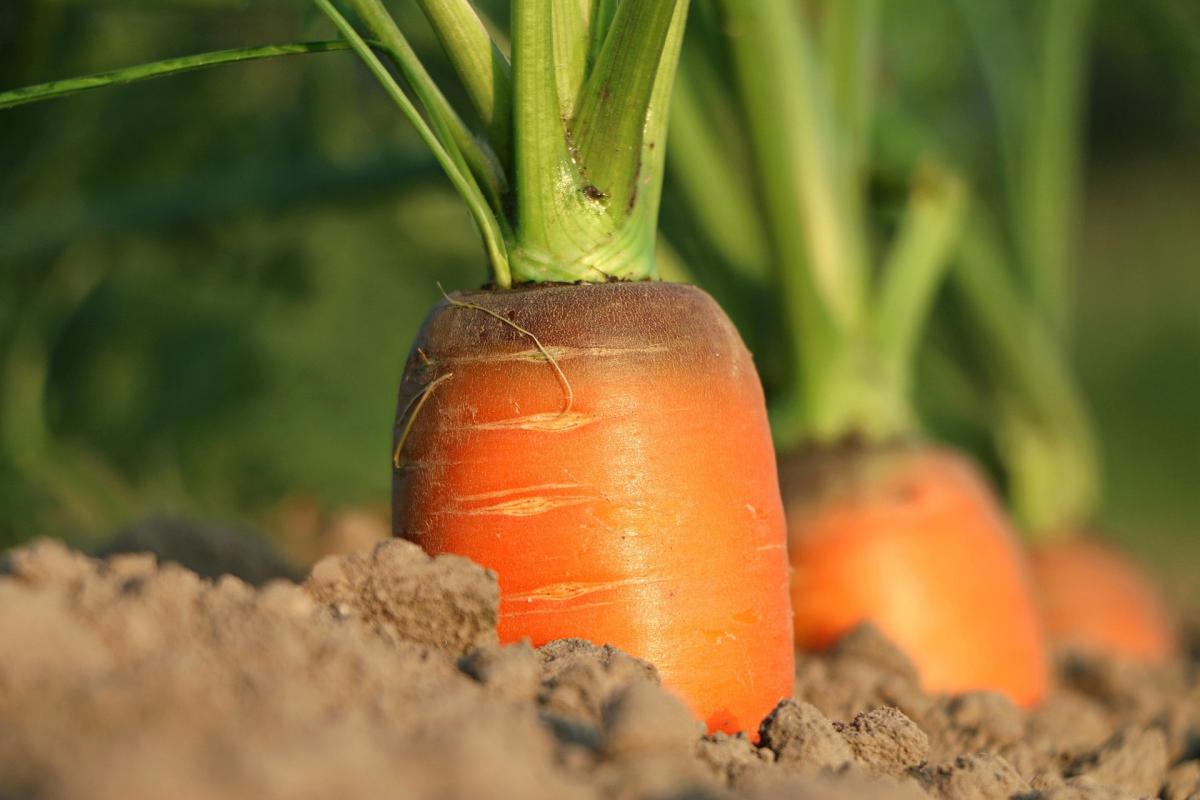Fibre plays an important role in maintaining well-being, from promoting a healthy digestive system to helping manage blood sugar and cholesterol levels. Despite its numerous benefits, many people fall short of the recommended daily intake of around 30g for adults.
The benefits of adequate fibre intake are extensive and include:
Digestive Health: It's paramount for regular bowel movements, preventing constipation and reducing the risk of diverticular disease.
Blood Sugar Control: Soluble fibre can slow the absorption of sugar, which helps improve blood sugar levels, particularly beneficial for individuals with diabetes.
Cholesterol Reduction: Soluble fibre can help lower 'bad' (LDL) cholesterol levels by binding with cholesterol particles in the digestive system and removing them from the body.
Weight Management: Fibre-rich foods tend to be more filling, helping you feel satiated for longer and potentially reducing overall calorie intake.
Heart Health: By reducing cholesterol and aiding blood sugar control, fibre contributes significantly to a healthier cardiovascular system.
Gut Microbiome Support: Fibre acts as a pre-biotic, feeding the beneficial bacteria in your gut, which is increasingly recognised as vital for overall health and immunity.
Let's explore ten actionable tips to help you reach your daily fibre goals.
Ten Tips for Getting Enough Daily Dietary Fibre
1. Embrace Whole Grains: The Foundation of Fibre
One of the simplest yet most effective ways to significantly boost your fibre intake is by making a conscious switch to whole grains. Unlike refined grains, which have had the bran and germ removed (stripping away most of the fibre and nutrients), whole grains retain all three parts of the grain kernel: the bran, germ, and endosperm.
Swap Your Bread: This is perhaps the easiest starting point. Ditch white bread for seeded wholemeal or wholewheat bread. A single slice of wholemeal bread can provide around 2-3g of fibre, and if it's packed with seeds like flax, chia, sunflower, and pumpkin, that number can climb even higher, offering a delightful crunch and an additional nutrient boost. Look for loaves that explicitly state "wholemeal" or "wholewheat" as their primary ingredient.
Cereal Choices: Opt for breakfast cereals that list whole grains as their first ingredient. Porridge oats, shredded wheat, and bran flakes are excellent choices, often providing 3g or more of fibre per serving. Avoid heavily sugared or refined cereals.
Pasta and Rice Alternatives: Make the switch from white pasta to wholewheat pasta, and from white rice to brown rice, wild rice, or even quinoa. These whole grain alternatives offer a chewier texture and a richer flavour, alongside a substantial fibre increase. A serving of brown rice can provide around 3.5g of fibre, compared to less than 1g for white rice.
Experiment with Grains: Don't be afraid to try less common but highly fibrous grains like barley, bulgur wheat, or freekeh in your salads, soups, or as side dishes.
2. Prioritise Pulses and Legumes: Powerhouses in a Pod
Pulses (the edible seeds of plants in the legume family) are absolute fibre champions and incredibly versatile. They are also packed with protein, making them excellent meat alternatives and budget-friendly additions to any diet.
Beans: Kidney beans, black beans, cannellini beans, and butter beans are all fantastic. Add them to chillies, stews, soups, or blend them into dips like hummus (made from chickpeas). A 100g serving of cooked kidney beans can provide an impressive 6-7g of fibre.
Lentil Love: Red, green, and brown lentils are quick-cooking and perfect for curries, dahls, soups, and even salads. A cup of cooked lentils provides around 15g of fibre, making them one of the most fibre-dense foods available.
Peas Please: Don't underestimate the humble pea! Fresh or frozen, they add a sweet burst of flavour and fibre to countless dishes.
Daily Dose: Aim to include at least one serving of pulses or legumes in your meals each day. They can be a simple addition to a salad at lunch or form the basis of a hearty dinner.
3. Load Up on Fruits: Nature's Sweet Fibre Fix
Fruits are not just delicious; they are also fantastic sources of dietary fibre, along with a host of vitamins, minerals, and antioxidants. While fruit juice contains some vitamins, it largely lacks the beneficial fibre found in whole fruit.
Eat the Skin: Many fruits have a significant amount of fibre in their skin. Always wash thoroughly, but enjoy the skin on apples, pears, plums, and peaches.
Berries Galore: Raspberries, blackberries, strawberries, and blueberries are particularly high in fibre. A cup of raspberries can provide around 8g of fibre. Add them to your breakfast cereal, yoghurt, smoothies, or enjoy as a snack.
Bananas: A Convenient Classic: Yes, bananas are an excellent source of dietary fibre, particularly resistant starch, which acts like fibre and is beneficial for gut health. A medium banana typically contains around 3g of fibre. They are also incredibly convenient for on-the-go snacking, adding to cereals, or blending into smoothies. Opt for slightly under-ripe bananas for a higher resistant starch content.
Tropical Treats: Don't forget tropical fruits like kiwi, mango, and pineapple, which also contribute valuable fibre. A single kiwi fruit has about 2g of fibre.
4. Veg Out: Make Vegetables Your Mealtime Mainstay
Vegetables are another cornerstone of a high-fibre diet. Their diversity in colour, texture, and flavour makes it easy to incorporate them into every meal.
Aim for Variety: Different vegetables offer different types of fibre and nutrients. Try to eat a variety of vegetables each day.
Don't Peel Away Goodness: Similar to fruits, the skins of many vegetables are fibre-rich. Keep the skin on potatoes (baked, boiled, or roasted), carrots, and cucumbers when possible. A medium baked potato with its skin can offer around 3-4g of fibre.
Cruciferous Power: Broccoli, cauliflower, Brussels sprouts, and cabbage are excellent sources of fibre and a host of other health-promoting compounds.
Leafy Greens: Spinach, kale, and other leafy greens might not be the highest in fibre per serving, but their versatility means you can easily consume larger quantities.
Snack on Vegetables: Instead of crisps or biscuits, snack on carrot sticks, celery, bell pepper strips, or cherry tomatoes with hummus.
5. Nuts and Seeds: Small Packages, Big Fibre Punch
Nuts and seeds are nutritional powerhouses, offering healthy fats, protein, and a substantial amount of fibre. They are perfect for snacking or adding texture and flavour to meals.
Snack Smart: A handful of almonds (about 23 nuts) provides around 3.5g of fibre. Walnuts, pistachios, and pecans are also great choices.
Sprinkle Liberally: Add chia seeds, flaxseeds, and hemp seeds to your morning porridge, yoghurt, smoothies, or salads. Two tablespoons of chia seeds alone can deliver approximately 10g of fibre.
Seeded bread is an excellent way to incorporate additional fibre into your daily diet. The diverse array of seeds not only adds fibre but are also nutrient dense.
6. Smart Snacking: Fibre Between Meals
Snacks can often be culprits for low-fibre intake, dominated by processed options. By making smarter choices, you can add significant fibre to your day.
Fruit and Nut Combos: An apple with a small handful of almonds, or a banana with a tablespoon of peanut butter.
Veggie Sticks and Dips: Carrot, celery, and bell pepper sticks with hummus or a bean dip.
Oatcakes: Opt for wholemeal oatcakes as a base for cheese or avocado.
7. Start Your Day with Fibre-Rich Breakfasts
Breakfast is an ideal opportunity to kickstart your fibre intake for the day.
Oats are Gold: Porridge made with rolled oats is a fibre champion. A bowl can provide around 4g of fibre. Boost it further with berries, sliced banana, flaxseeds, or chia seeds.
Wholemeal Toast: As mentioned, seeded wholemeal bread with avocado, eggs, or nut butter.
Fruit and Yoghurt: Combine natural yoghurt with berries, a chopped banana, and a sprinkle of nuts and seeds.
Whole Grain Cereals: Choose high-fibre breakfast cereals like bran flakes or muesli (ensure it's low in added sugar).
8. Don't Forget the Potato Skins and Root Veggies
While often peeled away, the skin of many root vegetables, particularly potatoes, is surprisingly rich in fibre and other nutrients.
Baked Potatoes: Enjoy a baked potato with its skin for a simple, fibre-rich meal or side.
Roasted Root Vegetables: Leave the skin on carrots, parsnips, and sweet potatoes when roasting for added texture and fibre. A medium sweet potato with skin provides around 4g of fibre.
Mash with Skin: For a twist, try mashing boiled potatoes with their skins on for extra texture and fibre.
9. Cook with Fibre in Mind: Simple Swaps and Additions
Integrating fibre into your cooking often just requires a small shift in ingredients or an extra addition.
Thicken Soups and Stews: Use pureed vegetables or blend in some cooked lentils or beans to naturally thicken and boost the fibre content of your soups and stews.
Add Beans to Meat Dishes: Bulk out mince-based dishes like Bolognese, shepherd's pie, or tacos with kidney beans or lentils. You'll use less meat and add a significant fibre punch.
Experiment with Vegetable-Based Sauces: Instead of just tomato-based sauces, try sauces made from blended roasted vegetables like bell peppers, courgettes, or aubergine for pasta.
Baking with Fibre: When baking, try substituting some of the white flour with wholemeal flour (e.g., half white, half wholemeal), or add oat bran and flaxseeds to cakes.
10. Hydrate, Hydrate, Hydrate: The Fibre Partner
This tip isn't about adding fibre, but about making sure the fibre you consume can do its job effectively. Fibre needs water to move through your digestive system smoothly. Without adequate hydration, a high-fibre diet can lead to discomfort, bloating, and even constipation.
Drink Plenty of Water: Aim for at least 6-8 glasses of water a day, more if you are exercising or in a hot climate.
Listen to Your Body: If you're increasing your fibre intake, pay attention to your thirst signals and drink accordingly.
Fluid Sources: Herbal teas, diluted fruit juice (in moderation), and even water-rich fruits and vegetables contribute to your fluid intake.
Incremental Changes Are Key:
While the benefits of fibre are undeniable, it's crucial to increase your intake gradually. A sudden dramatic increase in fibre can lead to uncomfortable digestive symptoms such as bloating, gas, and abdominal cramps, particularly if your body isn't used to it.
Start by introducing one or two high-fibre changes each week, giving your digestive system time to adjust. For example, switch to wholemeal bread for a week, then add a serving of lentils to your dinner the next. Always remember to drink plenty of water as you increase your fibre consumption.
Fibre- A Cornerstone of Health
Adding more dietary fibre into your daily routine doesn't require a radical overhaul of your diet. As we’ve explored, it's about making small, conscious choices that collectively add up to significant health benefits. From choosing seeded wholemeal bread for your sandwiches to snacking on a convenient banana, or enriching your meals with colourful vegetables and versatile pulses, every fibre-rich choice moves you closer to optimal digestive health, stable blood sugar, and a thriving heart.
By embracing these ten practical tips, you can effortlessly transform your eating habits, not only meeting the recommended daily fibre intake but also discovering a delicious and diverse array of foods that nourish your body from the inside out. Start today, and fuel your future with the right amount of fibre.



